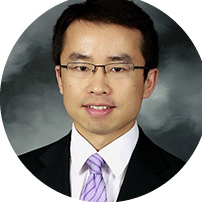Advanced Technologies for Extractive Metallurgy
A special issue of Metals (ISSN 2075-4701). This special issue belongs to the section "Extractive Metallurgy".
Deadline for manuscript submissions: closed (31 January 2022) | Viewed by 10676
Special Issue Editor
Interests: ferrous metallurgy; microwave processing; comprehensive utilization of resources; waste valorization; powder agglomeration; low-carbon technology; process simulation; dielectric characterization; electromagnetic shielding; synthesis of functional materials
Special Issues, Collections and Topics in MDPI journals
Special Issue Information
Dear Colleagues,
In recent years there has been a great surge in demand for various indispensable metals because of their ever-increasing consumption. The studies of extraction of metals from diverse materials, ranging from primary ores to end-of-life products, are essential to ensure the progress of human community. However, to date, problems such as depletion of mineral resources, poor energy efficiency, huge capital cost, and massive discharge of wastes, have not been sufficiently addressed in the development of metal extraction technologies which depends on advanced design and optimized techniques from combined theoretical, experimental, and practical perspectives. In view of this, incessant efforts placed into searching for innovative, cost-effective and sustainable technologies of metal extraction are of paramount importance for their successful implementations.
This Special Issue aims to provide a platform for scientists and engineers to present their latest achievements in the extraction of metals. Topics include, but are not limited to, process foundations of new technologies based on hydrometallurgy, pyrometallurgy, electrometallurgy, and their combinations. We are particularly interested in the research concerning mechanisms of metal extraction integrated with thermodynamic modeling or aided by first-principles calculations. We also welcome articles reporting the efforts directed toward practical metallurgical processes, including economic and life cycle analyses.
Prof. Dr. Zhiwei Peng
Guest Editor
Manuscript Submission Information
Manuscripts should be submitted online at www.mdpi.com by registering and logging in to this website. Once you are registered, click here to go to the submission form. Manuscripts can be submitted until the deadline. All submissions that pass pre-check are peer-reviewed. Accepted papers will be published continuously in the journal (as soon as accepted) and will be listed together on the special issue website. Research articles, review articles as well as short communications are invited. For planned papers, a title and short abstract (about 100 words) can be sent to the Editorial Office for announcement on this website.
Submitted manuscripts should not have been published previously, nor be under consideration for publication elsewhere (except conference proceedings papers). All manuscripts are thoroughly refereed through a single-blind peer-review process. A guide for authors and other relevant information for submission of manuscripts is available on the Instructions for Authors page. Metals is an international peer-reviewed open access monthly journal published by MDPI.
Please visit the Instructions for Authors page before submitting a manuscript. The Article Processing Charge (APC) for publication in this open access journal is 2600 CHF (Swiss Francs). Submitted papers should be well formatted and use good English. Authors may use MDPI's English editing service prior to publication or during author revisions.
Keywords
- Metal extraction
- Hydrometallurgy
- Pyrometallurgy
- Electrometallurgy
- Recycling
- Recovery
- Thermodynamic modeling
- First-principles calculations
- Life cycle assessment





